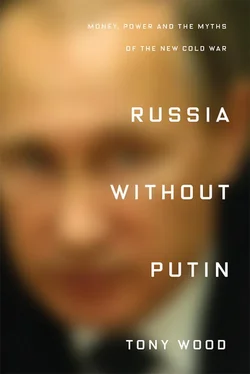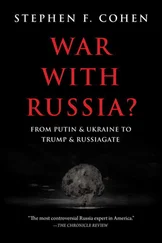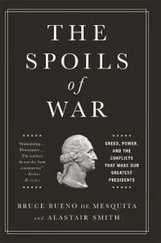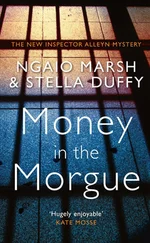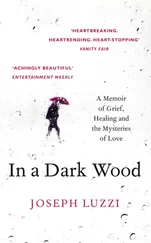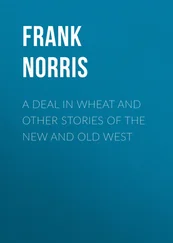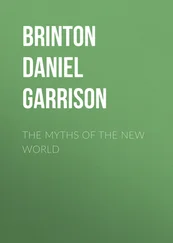But the central aim of the Kremlin’s intervention in Syria was, in my view, neither to protect Assad nor to prevent regime change per se; it was, rather, an attempt to re-establish Russia’s importance on the world stage. A desire for more equal treatment from the West had been a longstanding theme of Russian diplomacy, from Primakov onward, and it recurred in disagreements over Syria. In February 2013, for instance, Russian Foreign Minister Sergei Lavrov told a TV interviewer that the US ‘needs to be taught that affairs can only be conducted on the basis of equality, balance of interests and mutual respect’. {51} 51 ‘Foreign Minister Sergey Lavrov’s interview on the “Sunday evening with Vladimir Solovyev” program on “Russia” TV’, Moscow, 10 February 2013; English translation available at www.mid.ru .
After the Maidan, and with the US and its allies bent on a policy of isolating Russia internationally, the urge to claim parity gave way to a more pressing need to reassert Russia’s relevance.
Syria became the critical means for doing so. Already in September 2013, Russia had given notice of its diplomatic capacities, brokering a deal designed to destroy Syria’s chemical weapons arsenal and thus avert the airstrikes the Obama administration had threatened against Assad. Further waves of diplomatic activity around Syria followed, including hosting meetings of Syrian opposition groups and the Assad government in Moscow in January 2015. Even when Russia began its own armed intervention in Syria a few months later, the Kremlin was not entirely switching from the diplomatic track – further talks took place in Vienna in October 2015, at the same time as Russian airstrikes were being carried out. Rather, the military action in Syria was evidently calibrated to show that Russia could materially affect the course of the conflict – and was therefore a power whose interests had to be taken into account, rather than a pariah facing ever deeper isolation.
The same aspiration, too, explains the revival, a decade and a half after 11 September 2001, of Putin’s dream of an international anti-terrorist alliance, which he put forward to the UN General Assembly in September 2015. A grand US–Russian coalition of this kind would no doubt have levelled what was left of Syria, jointly creating a desert and calling it peace. The idea was never likely to be endorsed by a Democratic administration, and although it seemed during the 2016 campaign as if Trump might be amenable to the idea, that hope quickly evaporated after November amid the constant stream of allegations of Russian election meddling.
With Trump’s victory, Russia moved to the centre of US public and media debate as never before in the post-Soviet era. Among dismayed Democrats, Russian interference became the default explanation for Clinton’s defeat: it was as if the Kremlin had hacked American democracy itself. Of course, whatever trouble the Russian government may have wanted to cause the Clinton campaign, it made little difference to the actual outcome of the vote. (And all indications are that the Kremlin, like so many other observers, expected Clinton to win anyway.) But ‘Russia’ quickly became a convenient, all-purpose signifier enabling many American liberals to avoid discussing the multiple factors behind Trump’s disastrous success, from the anti-democratic distortions of the electoral college system to the disenfranchisement of voters, especially African-Americans, through voter ID laws and mass incarceration. Rather than confront the deep flaws in the US’s own institutions, political system and society that produced the freak result, for many it was more convenient – more emotionally accurate, too – to blame Trump’s ascent on an outside power, and implicitly to identify Trump himself as a foreign body.
Even before Trump’s inauguration, it became clear that tarring the new president by association with Russia would be the predominant angle of attack for much of the US media and political establishment. In January 2017, several intelligence agencies signed on to an extremely thin and barely literate ‘assessment’ that ‘Vladimir Putin ordered an influence campaign in 2016 aimed at the US presidential election’. {52} 52 By far the best analysis of the report and its ‘findings’ is by Masha Gessen, ‘Russia, Trump & Flawed Intelligence’, New York Review Daily , 9 January 2017.
For months thereafter, one figure in the Trump administration after another was found to have suspicious ties to Russia: Secretary of State Rex Tillerson was too cosy with Putin, national security adviser Michael Flynn took money for lobbying efforts, Attorney General Jeff Sessions lied about his meetings with the Russian ambassador to the US, Trump’s son Donald Jr and other members of his campaign team discussed with assorted Russians how to damage Clinton, and so on.
Much of this was undoubtedly murky, though crookedness and lying of this kind are hardly unusual fare in US politics. The difference lay in the brazenness of the Trump campaign, and the fact that it was connected to Russia – now recurrently referred to as a ‘hostile power’. Not just corruption, then, but also treason was in the air. The paranoias of the Cold War seemed to have made a comeback: in November 2016, for example, a mysterious online group called PropOrNot went full McCarthy by releasing ‘The List’, designed to name and shame – or indeed casually smear – websites that it believed ‘reliably echo Russian propaganda’. In September 2017, a new entity called the Committee to Investigate Russia released a video in which Morgan Freeman told viewers, ‘We have been attacked. We are at war.’ More than the 2016 election was at stake: Putin and his army of hackers had made Americans ‘distrust their media, their political processes, even their neighbours’.
‘Russia’ became what Masha Gessen called ‘the universal rhetorical weapon of American politics’. {53} 53 Masha Gessen, ‘Russia: The Conspiracy Trap’, New York Review Daily , 6 March 2017.
But what was the connection between ‘Russia’ as deployed within the US political scene and Russia itself? The main concerns of those resorting to ‘Russia’ as a rhetorical weapon were domestic, focused on undermining the Trump presidency and, if possible, levering him out of office. Yet the Russia panic had real consequences on the international stage: it made impossible any easing of the sanctions regime, and blocked off for the foreseeable future any rapprochement with Moscow. The possibility of a new bargain with the West, which the Putin administration evidently hoped to secure under Trump, all but vanished.
The accumulated tensions of the previous decade are unlikely to dissipate any time soon. But does this mean that we do indeed find ourselves living through a ‘New Cold War’? To some extent, the very idea of a cold war is a kind of geopolitical speech act: if enough people in power decide they are in one, it will materialize. Yet there are decisive differences between current frictions and the global contest that followed the Second World War. Most obvious is the lack of remotely comparable ideological stakes: it is not two rival socio-economic systems that now confront each other, but states, or blocs of them, with opposed interests. Then there is the fact that Russia–West tensions have not so far dragged in the same array of allies and clients as before: this time around, China, East and South Asia, Africa and Latin America are all bystanders. For the same reason, the struggle this time is much more geographically circumscribed; with the grim exception of Syria, the zones of contention have been in Eastern Europe. Overall, both Russia and the world have been so transformed over the past generation that none of the Cold War conditions can be said to apply.
Читать дальше
